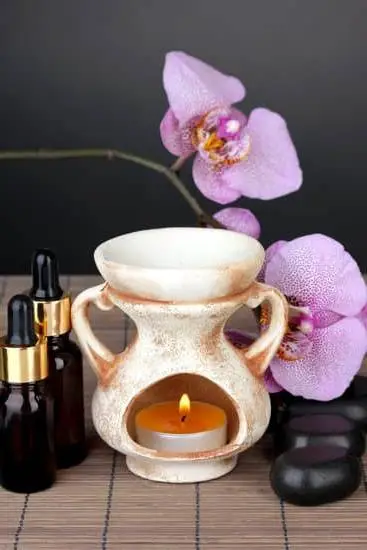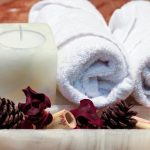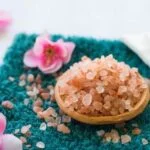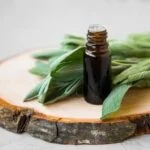How do you use a diffuser for aromatherapy? Aromatherapy is the practice of using natural oils to enhance psychological and physical well-being. The use of a diffuser is one way to enjoy the benefits of aromatherapy by dispersing essential oils into the air. Diffusers come in various types and have different purposes, making them an essential tool for anyone interested in incorporating aromatherapy into their daily routine.
Aromatherapy utilizes the aromatic essences of plants to promote holistic healing and overall wellness. By inhaling these natural scents, individuals can experience relaxation, stress relief, improved sleep, and heightened mood. These benefits make aromatherapy a popular choice for those seeking natural remedies for common ailments.
The purpose of a diffuser in aromatherapy is to effectively disperse essential oils into the air, allowing for inhalation and absorption through the skin. This method provides a gentle and continuous release of the therapeutic properties of the oils, creating a soothing or invigorating atmosphere depending on the chosen essential oil blend. The use of a diffuser also eliminates the need for direct application of essential oils to the skin, reducing any potential risk of irritation.
The Purpose and Benefits of Using a Diffuser
A diffuser plays a crucial role in the practice of aromatherapy, which involves using essential oils to promote physical and emotional well-being. By dispersing the aroma of essential oils into the air, a diffuser allows individuals to enjoy the therapeutic benefits of these natural plant extracts. One of the main purposes of using a diffuser for aromatherapy is to create a calming and soothing environment that can help reduce stress, improve relaxation, and enhance overall mood.
The benefits of using a diffuser for aromatherapy are numerous. Not only does it allow for easy and convenient access to the healing properties of essential oils, but it also helps purify and humidify the air in your space.
Additionally, diffusers can serve as natural air fresheners, eliminating odors and creating an inviting ambiance in any room. Moreover, using a diffuser can also help boost mental clarity, focus, and energy levels by providing an uplifting scent that can positively impact cognitive function.
To fully understand how do you use a diffuser for aromatherapy effectively, it’s important to consider the advantages that come with utilizing this device. Whether you’re looking to promote better sleep, alleviate respiratory issues, or simply create a more pleasant atmosphere at home or work, incorporating a diffuser into your daily routine can have significant positive effects on your overall well-being.
- Improved relaxation
- Stress reduction
- Enhanced mood
- Mental clarity
- Purifies and humidifies the air
Types of Diffusers Available
Ultrasonic Diffusers
Ultrasonic diffusers work by using ultrasonic vibrations to create a fine mist of water and essential oils that is released into the air. One of the main advantages of ultrasonic diffusers is that they also act as humidifiers, adding moisture to the air which can be especially beneficial in dry environments. They are also generally quiet and are available in a wide range of styles and designs.
Nebulizing Diffusers
Nebulizing diffusers do not require any water and work by breaking down essential oils into tiny particles before dispersing them into the air. This type of diffuser is known for providing a strong concentration of essential oils, making it ideal for therapeutic purposes. However, they can be louder than other types of diffusers and may use oils more quickly.
Evaporative Diffusers
Evaporative diffusers function by allowing essential oils to evaporate into the air. These diffusers typically consist of a pad or filter onto which the essential oil is applied, which is then blown into the surrounding air, allowing for the aroma to spread. While these diffusers are simple to use and generally inexpensive, they may not be as effective at dispersing oil particles as other types of diffusers.
Understanding the differences between these types of diffusers and their respective pros and cons can help individuals select the most suitable option for their specific aromatherapy needs. Whether one prioritizes a quiet operation, strong concentration of oils, or simplicity in design will dictate which type of diffuser will serve them best. This careful consideration ensures an optimal aromatherapy experience tailored to individual preferences and lifestyle.
Selecting the Right Essential Oils for Diffusing
Aromatherapy involves the use of essential oils to promote physical and psychological well-being. When selecting essential oils for diffusing, it is important to consider their therapeutic properties and intended benefits. Here are some guidelines for choosing the right essential oils based on their specific uses:
- Lavender: Known for its calming and relaxation properties, lavender essential oil is an excellent choice for promoting restful sleep and reducing stress and anxiety.
- Peppermint: With its invigorating scent, peppermint essential oil can help alleviate headaches, improve focus, and provide relief from congestion.
- Lemon: This citrusy essential oil is uplifting and energizing, making it ideal for boosting mood, enhancing mental clarity, and eliminating odors in the environment.
- Tea Tree: Recognized for its antibacterial and antiviral properties, tea tree essential oil is commonly used for purifying the air, supporting immune health, and treating skin conditions.
In addition to these popular essential oils, there are numerous other options available with a wide range of therapeutic benefits. It’s important to consider personal preferences and any potential sensitivities or allergies when choosing essential oils for diffusing. Experimenting with different oils and blends can help individuals discover which scents work best for them in achieving their desired outcomes.
When using a diffuser for aromatherapy with essential oils, it is also crucial to follow the manufacturer’s recommendations for dilution ratios and usage instructions. By doing so, individuals can ensure a safe and effective aromatherapy experience that maximizes the benefits of the chosen essential oils. Incorporating aromatherapy into daily life through diffusing essential oils can contribute to overall wellness and create a more uplifting environment at home or in various settings.
How to Use a Diffuser for Aromatherapy
A diffuser is a device used to disperse essential oils into the air, allowing for inhalation as well as aromatherapy. So, how do you use a diffuser for aromatherapy?
One popular type of diffuser is the ultrasonic diffuser, which uses water and ultrasonic vibrations to diffuse essential oils into the air in the form of a fine mist. To use an ultrasonic diffuser, fill the reservoir with water, add a few drops of your chosen essential oil or blend, then turn on the diffuser.
Another common type of diffuser is the nebulizing diffuser. This type doesn’t require water and operates by using pressurized air to create a fine mist of essential oils. To use a nebulizing diffuser, simply attach the essential oil bottle to the base of the diffuser, set the timer or interval settings according to your preferences, and let it run.
Evaporative diffusers are also available and use a fan to blow air through a pad or filter containing essential oils. To use this type of diffuser, apply a few drops of essential oil onto the pad or filter and turn on the fan.
Regardless of the type you choose, it’s important to follow manufacturer instructions for using and cleaning your diffuser regularly to maintain its effectiveness.
| Diffuser Type | How to Use |
|---|---|
| Ultrasonic Diffuser | Fill reservoir with water, add essential oils, then turn on |
| Nebulizing Diffuser | Attach essential oil bottle, set timer/intervals, then run |
Precautions and Safety Measures
When using a diffuser for aromatherapy, it is important to understand the potential risks and safety measures associated with essential oils. While aromatherapy can provide numerous benefits such as stress relief, improved sleep, and relaxation, it is crucial to use essential oils and diffusers responsibly.
One key precaution to keep in mind is the potential allergic reactions that essential oils can cause. It is recommended to perform a patch test before using any new essential oil, especially if you have sensitive skin or allergies. Additionally, some essential oils can be toxic to pets, so it is important to research which oils are safe to diffuse around animals.
In terms of safety measures when using a diffuser, always follow the manufacturer’s instructions for your specific model. This includes proper dilution of essential oils, avoiding overexposure, and ensuring proper ventilation in the room where the diffuser is being used. It is also important to keep diffusers out of reach of children and pets to prevent accidental ingestion or spillage.
Furthermore, individuals with respiratory conditions should be cautious when using essential oils for aromatherapy. Those with asthma or other respiratory issues may find certain scents irritating or triggering, so it is advisable to consult with a healthcare professional before incorporating aromatherapy into their wellness routine.
| Precautions | Safety Measures |
|---|---|
| Allergic Reactions | Follow manufacturer’s instructions |
| Potential toxicity to pets | Avoid overexposure |
| Respiratory conditions | Perform patch test before use |
Troubleshooting Common Diffuser Issues
When using a diffuser for aromatherapy, it is essential to understand that like any other electronic device, diffusers may encounter common issues that can affect their performance. This section focuses on addressing these common problems and providing solutions to ensure that you continue to enjoy the benefits of using a diffuser for aromatherapy.
Addressing Clogging and Malfunctioning
One of the most common issues with diffusers is clogging, which can occur when essential oils or mineral deposits accumulate in the device. This can lead to reduced mist output or even complete malfunction.
To prevent clogging, it is important to clean your diffuser regularly as per the manufacturer’s instructions and use distilled water instead of tap water. If you do encounter clogging, try using a small brush or cotton swab dipped in rubbing alcohol to gently clean the ultrasonic plate or nebulizing mechanism.
Maintaining and Cleaning Your Diffuser
Regular maintenance and cleaning are crucial for preventing common issues with your diffuser. Follow the manufacturer’s guidelines for cleaning, which typically involves emptying any remaining water and wiping down the interior with a soft cloth after each use.
For a more thorough cleaning, you may need to use a mixture of water and white vinegar to remove any mineral buildup. It is also important to ensure that all components are completely dry before using the diffuser again to avoid any potential damage.
Tips for Troubleshooting Other Issues
In addition to clogging and malfunctioning, other common issues with diffusers may include low mist output, strange noises during operation, or difficulties with turning the device on or off. When facing these problems, refer to the user manual for troubleshooting tips provided by the manufacturer. For example, if your nebulizing diffuser is making loud noises, it may indicate that the oil has built up in concentrated areas – running rubbing alcohol through it should resolve this issue.
By understanding how to troubleshoot common diffuser issues and properly maintaining your device, you can ensure that you continue to benefit from the soothing effects of aromatherapy in your daily life without interruption.
Incorporating Aromatherapy Into Daily Life
By using a diffuser for aromatherapy, individuals can easily introduce essential oils into their daily routines. Whether it’s through creating a soothing ambiance at home with lavender essential oil or promoting focus and productivity in the office with peppermint essential oil, the versatility of diffusers allows for personalized aromatherapy experiences to suit individual needs.
In addition to providing immediate benefits, incorporating aromatherapy into daily life with the use of a diffuser can lead to long-term advantages. Creating consistent and positive environments through aromatherapy can contribute to overall mental wellness and emotional balance. With proper knowledge on choosing the right essential oils and using diffusers effectively and safely, individuals can easily integrate aromatherapy into their daily rituals for improved well-being.
Frequently Asked Questions
How Do You Use a Diffuser in a Room?
To use a diffuser in a room, you first fill the reservoir with water. Then, add a few drops of your chosen essential oil to the water. Turn on the diffuser and let it disperse the aromatic mist throughout the room.
Do You Have to Put Oil in a Diffuser?
Yes, you do need to put oil in a diffuser for it to work effectively and emit fragrance into the air. Different types of essential oils can be used depending on your preference or their specific benefits.
Do I Mix the Water and Essential Oils in a Diffuser?
When using a diffuser, you should mix water and essential oils together in the reservoir of the diffuser. The water helps to dilute the essential oils and allows them to be dispersed as a fine mist into the air for aromatherapy purposes.

Are you looking for a natural way to improve your health and wellbeing?
If so, aromatherapy may be the answer for you.





